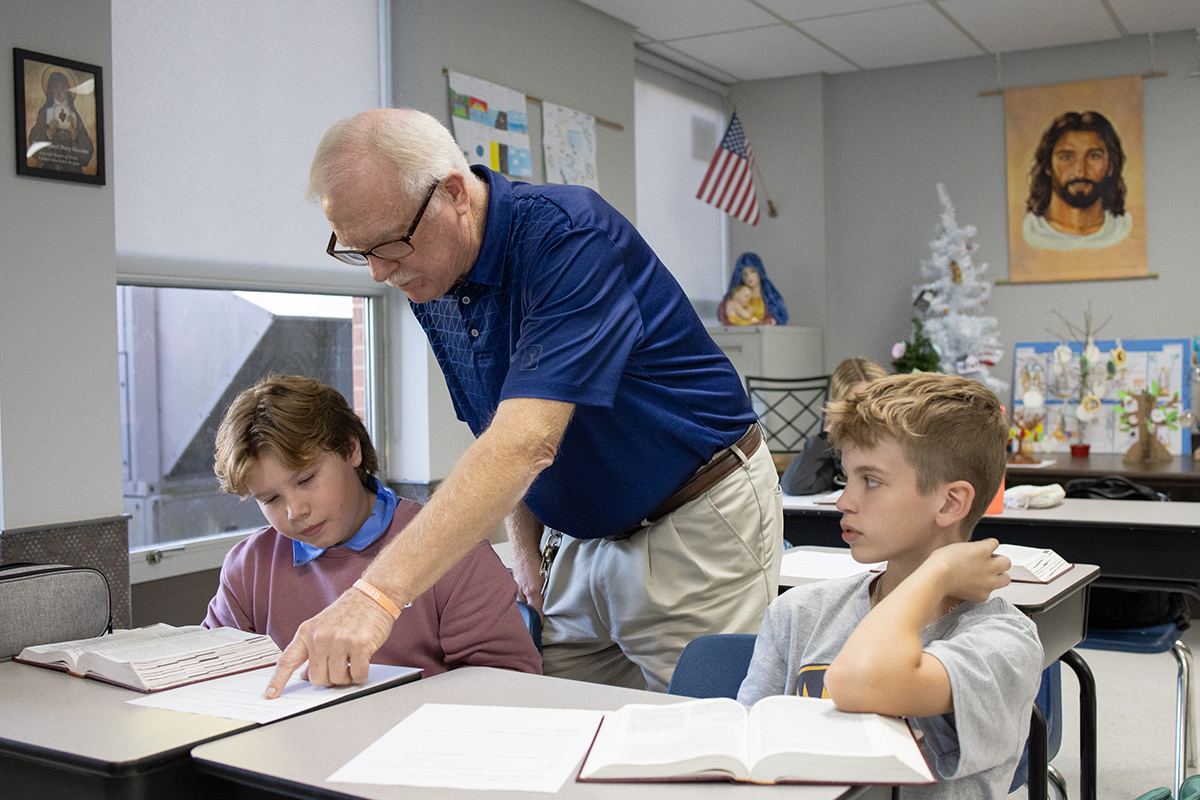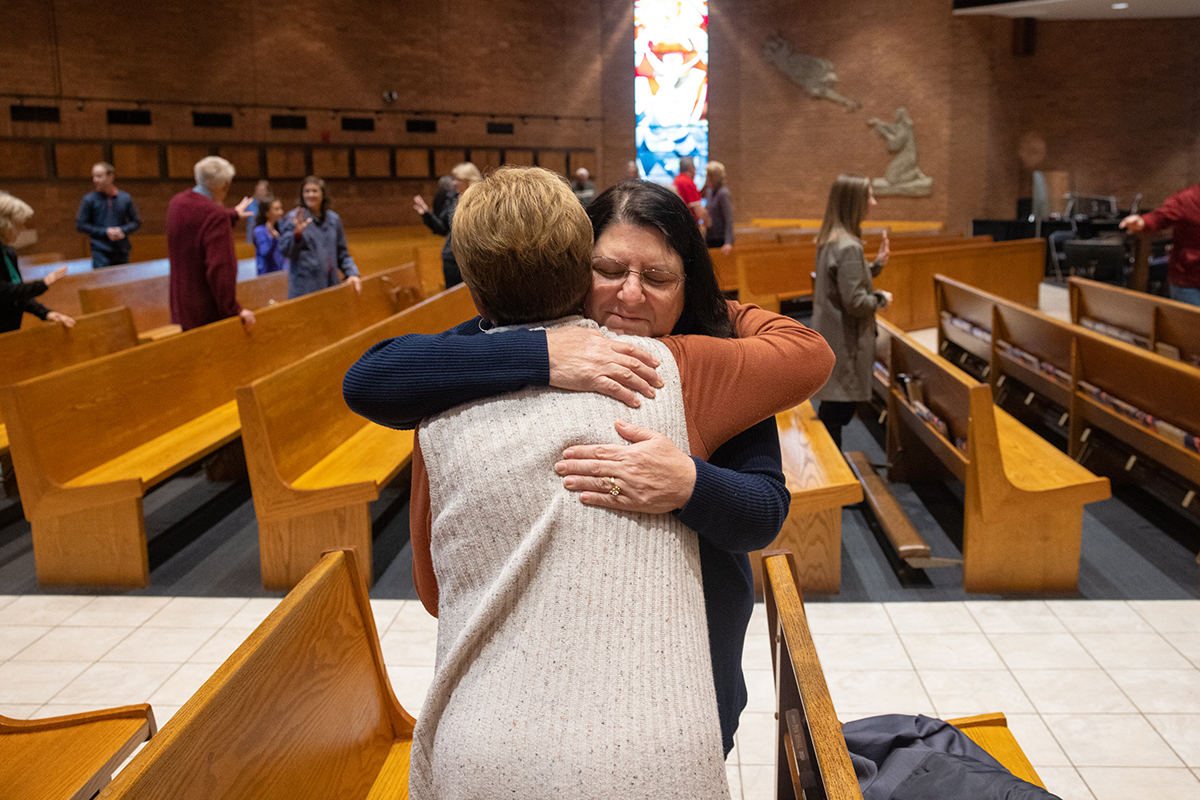Archdiocesan schools implement universal safety and security plan

Standard Response Protocol puts school communities, first responders on the same page across counties
Archdiocesan schools are adopting a universal safety and security plan this year.
While all schools already had security measures and safety plans in place to respond to potential threats or disasters, the new plan will standardize protocol across archdiocesan elementary and high schools. It includes a Standard Response Protocol that can be applied to any situation and an online tip reporting form to help identify problems or threats.
The Standard Response Protocol provides shared language and actions among students, staff and first responders to respond to various incidents at school — weather events, fires, accidents, intruders or other threats to safety. It is action-based and allows the community to share a specific vocabulary for quick and coordinated action. The protocol is based on five actions: Hold, Secure, Lockdown, Evacuate and Shelter (see related).
The Standard Response Protocol was developed by the I Love You Guys Foundation, a nonprofit created by the family of a high school student killed in a 2006 shooting at Platte Canyon High School in Bailey, Colorado. Local safety technology company CrisisGo is working with each school on training and implementing the protocol, funded by the archdiocesan Office of Risk Management.
Sharing protocol will be helpful for students who transfer schools, students starting high school, teachers moving to a new school, substitute teachers, parents with children at multiple schools and more, CrisisGo senior safety specialist Kelly Moore told administrators gathered for training in October. Instead of learning varying procedures, codes or directives, anyone entering any archdiocesan school will be on the same page if a situation arises.
It will also be a big help to first responders who may be called to a school, Moore said. Because the archdiocese has schools in 10 counties and the City of St. Louis, many different police departments, fire departments and others could potentially be called to an incident at an archdiocesan school.
That was a big motivator for archdiocesan risk management director Brandon Rothkopf, who is coordinating the school safety plan with the Office of Catholic Education and Formation. Previously, archdiocesan schools may have used different terminology or code words to describe situations.
“But now, if, God forbid, something happens, and the FBI and local police and neighboring municipality police show up, they will know: OK, archdiocesan schools are on the I Love You Guys program. This is their protocol. This is how we work with them to address this immediately,” Rothkopf said. “Every second you save dealing with that stuff has the potential to save lives.”
The standard language is also meant to mitigate the fear that students and staff might feel during different drills, Rothkopf said.
“We want to create a culture of preparation without creating a culture of paranoia,” Rothkopf said. “We want kids to learn to train for different things. That’s why, with the I Love You Guys training and protocols, you hear a ‘lockdown’ command — no one is on the phone or on the PA system screaming ‘active shooter,’ or the code word that means that. The lockdown could be for any number of reasons, and the students will all just know that a lockdown means doors locked, lights off, out of sight.”
Tip reporting
The universal school safety plan includes online tip reporting to help prevent violence before it happens. Rothkopf noticed that after some school shootings, news reports indicated there were signs that something was wrong before the event occurred.
“My idea was, could we get something in place in our schools that takes our students, their parents, siblings, whoever, and turn them into an advanced radar that warns us if there’s somebody in their community that is showing signs?” Rothkopf said. It might be a current student at the school or someone who graduated several years ago but is now posting troublesome comments on social media, he said.
“We’re not just waiting for someone to try to get into our building. We’re being a little bit more proactive in how we view these things because the best possible solution would be to never let them get onto your premises in the first place,” he said.
The tip reporting form includes space to describe the concern or incident — threats, weapons, violence, bullying, drugs, self-harm or other safety concerns — and select the relevant school. Reports may be submitted anonymously, but administrators can follow up. Anonymous tips are not meant to replace personal relationships cultivated within a school community but are an option to encourage people who might not otherwise speak up about a concerning behavior they witnessed, said Moore, the CrisisGo safety specialist.
“People are reluctant to report something,” Moore said. “They don’t want to be wrong, they don’t want to be a snitch — there’s lots of reasons they don’t (report).”
Tip reports will go to primary and secondary contacts for each school, who will establish guidelines about following up and responding. Moore recommended that schools establish a multidisciplinary team to assess threats.
CrisisGo and the Office of Catholic Education and Formation are working with each school on training and implementation, with the goal of having all elementary and high schools up to speed by the end of December. After training, each school will have its own tip-reporting link through the Safe2SpeakUp app. In the meantime, tips regarding any school can be submitted at stlreview.com/46fbsNi.
Standard Response Protocol
The Standard Response Protocol developed by the I Love U Guys Foundation is based not on individual scenarios but on the response to any given scenario. There are five actions that can be performed during an incident at school, whether it be weather events, fires, accidents, intruders or other threats to student safety. The five actions can work together as situations evolve and information is gathered. To read more, visit iloveuguys.org.
Hold

Directive: “In your room or area”
Use: When hallways need to be kept clear of occupants.
Examples: An altercation in the hallway may require keeping students out of the halls until it is resolved. A medical issue may require only one area to be cleared, with halls still open in case outside medical assistance is required.

Secure
Directive: “Get inside. Lock outside doors.”
Use: To safeguard people within the building.
Examples: Violence or criminal activity in the immediate neighborhood, or a dangerous animal in the playground. Secure uses the security of the physical facility to act as protection.

Lockdown
Directive: “Locks, lights, out of sight.”
Use: To secure individual rooms and keep occupants quiet and out of sight.
Examples: A threat or hazard inside the school building such as an intruder or active assailant.

Evacuate
Directive: To the announced location.
Use: To move people from one location to a different location in or out of the building.
Examples: An on-site evacuation is conducted because of a mechanical failure such as a power outage. An offsite evacuation must be necessary when it’s no longer safe to stay in the building such as a gas leak or bomb threat. If there has been a violent event at the school, an off-site evacuation will almost always be necessary.

Shelter
Directive and Use: State the specific hazard and safety strategy for group and self protection.
Examples: Shelter can be used in response to tornadoes, earthquakes, hazardous materials situations or other local threats. Actions will vary depending on the specific hazard; for example, drop, cover and hold for an earthquake or getting to a tornado shelter during a tornado.
Archdiocesan schools are adopting a universal safety and security plan this year. While all schools already had security measures and safety plans in place to respond to potential threats or … Archdiocesan schools implement universal safety and security plan
Subscribe to Read All St. Louis Review Stories
All readers receive 5 stories to read free per month. After that, readers will need to be logged in.
If you are currently receive the St. Louis Review at your home or office, please send your name and address (and subscriber id if you know it) to subscriptions@stlouisreview.com to get your login information.
If you are not currently a subscriber to the St. Louis Review, please contact subscriptions@stlouisreview.com for information on how to subscribe.





